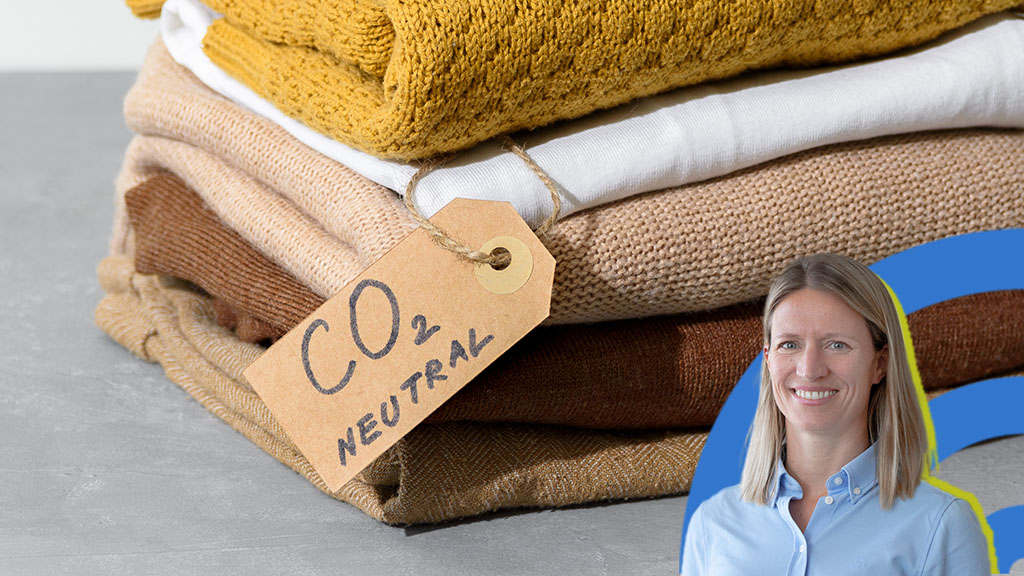"What can I do? How can I save so much CO2 in my private life or in my company that I make a noticeable contribution to climate protection? With the little I can do, I'm hardly going to be able to save the world, am I?"
I know: The influence that every individual and every company has on the global emission of greenhouse gases seems frustratingly small at first glance. But I am also convinced that this first impression is deceptive.
Become aware: Calculate your carbon footprint!
You can't save the world with one brilliant idea overnight. "Saving the world" is like most other things: You can only move forward step by step. And the very first step is: calculate your CO2 footprint! Make yourself aware of where and how you produce how much greenhouse gas.
Don't just think about your air travel! Most CO2 polluters are hidden in everyday life. For example, how big is your apartment and how many people do you live in it with? What kind of car do you drive and how often could you switch to public transport? Do you eat a vegetarian or meat-based diet? What clothes do you wear? Where and how were they made?
Calculating your own carbon footprint is not that difficult. With the Federal Environment Agency's CO2 calculator, it only takes you a few minutes. Apps like Codyo or Klima are also clever tools.
Discover: What you can do
And once you've figured out where and how much you contribute to global warming, the second step almost goes by itself: Think about how you can improve your personal carbon footprint. There are many ways. Buy as much food as possible from regional producers. Choose vegetables according to whether they are in season here (there are apps for this, too) or had to be flown in from far away. Apples instead of pineapples, for example.
I think reuse is a very important topic: second-hand has absolutely nothing to do with "second choice". On the contrary: I buy child seats or clothes for my kids second-hand. Why should they end up in the trash, even though they would last forever? I could go on and on. But the point is for you to discover for yourself what can be done. It's about, as the English say, "getting your toes wet," getting a feel for what you can do to improve your carbon footprint. And it's about taking the first step - no matter how small. Very important: Don't wait for the perfect solution, the zero-emissions solution, before you take that first step!
Start: Don't wait for the perfect solution!
And what applies at the private level also applies at the corporate level.
- Step one: calculate your own carbon footprint.
- Step two: Scour the entire value chain for opportunities where you can save CO2.
- Step three: take the first step.
For us at allsafe, for example, the production of the aluminum for our safety bars is one of the biggest CO2 emitters. So we looked for suppliers who offer recycled aluminum. They weren't always easy to find, but we made the effort.
The best way to save CO2 is, of course, the circular economy. Products that are repaired instead of made from scratch, that are reused and recycled throughout their lives, have the smallest carbon footprint of all.
What can you do?
Electricity and heating is responsible for one fifth (22%) of our private CO2 emissions.
Tip: Proper heating saves a lot of CO2
Driving, flights and public transport also cause 20% of personal CO2 emissions.
Tip: Ride more bikes and carpool and fly less
Diet accounts for 16% of CO2 emissions per capita
Tip1: Vegetarians cause about 50 percent less CO2 than meat eaters: How about without meat or meat substitutes? Just try it out!
Tip2: Cook fresh! Processed foods have a higher CO2 consumption than fresh regional products.
With our consumption, we consume over 40% of CO2 per capita and thus around 4.5 tons of CO2 per year. If you consume more consciously, you can already achieve a lot with small things!
Tip: reduce, reuse, recycle - so when shopping critically question: Do I really need it? Repair things more often instead of buying new ones and maybe buy secondhand? Read more about this in my blog posts Consumption renunciation increases the quality of life and New is better? No, better is: Thinking new - circular economy.

More info on all of the above here:
 CO2 emissions from home, food & transport: Where do you consume how much?
CO2 emissions from home, food & transport: Where do you consume how much?
Heike Hundertmark